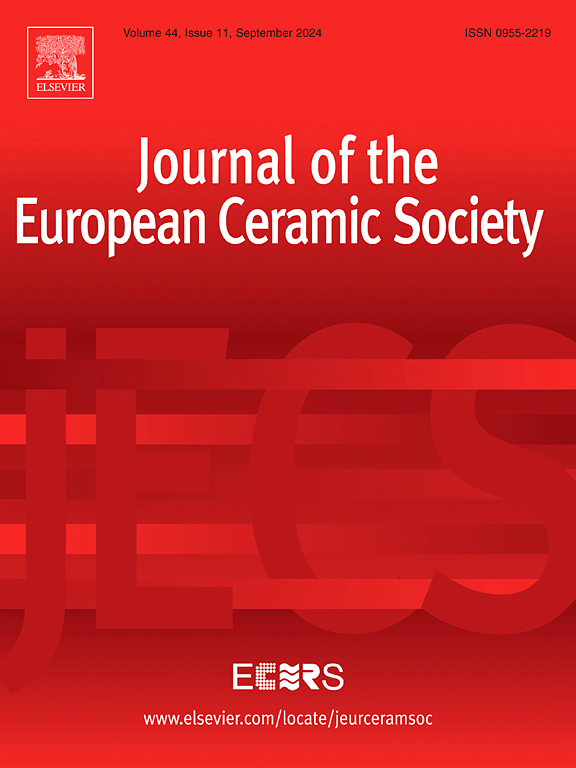Enhanced corrosion and oxidation resistance of environmental barrier coatings through densification and high crystallization at optimized deposition temperatures
IF 5.8
2区 材料科学
Q1 MATERIALS SCIENCE, CERAMICS
Journal of The European Ceramic Society
Pub Date : 2025-06-10
DOI:10.1016/j.jeurceramsoc.2025.117613
引用次数: 0
Abstract
To withstand extreme aero gas turbine environments, environment barrier coatings (EBCs) must strongly resist high-temperature oxidation and water-vapor corrosion. A highly dense and crystalline structure is key to durability. This study explores ytterbium disilicate and monosilicate hybrid coatings fabricated using different plasma spraying techniques and deposition temperatures to assess their effects on density, crystallinity, and water-vapor corrosion resistance. Results revealed that low-heated (∼200 ℃) air plasma sprayed (APS) coatings had high porosity (7.3 %), multi-cracked structures, and mostly amorphous (above 90 %), making them highly susceptible to degradation. In contrast, low-pressure plasma spraying (LPPS) with low input power minimized silicon evaporation during deposition and increased crystallinity to 83 % by raising deposition temperature to 800 ℃. Highly dense and crystallized LPPS coatings remained structurally integrity after 300 h exposure in 90 vol%H2O-10vol%O2 at 1350 ℃, effectively reducing silicate decomposition, cracking, and silicon oxidation, extending oxidation resistant life by more than 10 times.
在优化的沉积温度下,通过致密化和高结晶,增强了环境屏障涂层的耐腐蚀性和抗氧化性
为了承受极端的航空燃气轮机环境,环境屏障涂层(ebc)必须能够抵抗高温氧化和水蒸气腐蚀。高密度的晶体结构是耐久性的关键。本研究探讨了采用不同等离子喷涂技术和沉积温度制备的二硅酸钇和单硅酸钇杂化涂层,以评估其对密度、结晶度和抗水蒸气腐蚀性能的影响。结果表明,低温(~ 200℃)空气等离子喷涂(APS)涂层具有高孔隙率(7.3 %)、多裂纹结构和非晶态结构(90% %以上),极易降解。相比之下,低输入功率低压等离子喷涂(LPPS)将沉积温度提高到800℃,使沉积过程中硅的蒸发最小化,结晶度提高到83 %。高密度结晶的LPPS涂层在1350℃、90 vol%H2O-10vol%O2条件下暴露300 h后仍保持结构完整,有效减少硅酸盐分解、开裂和硅氧化,将抗氧化寿命延长10倍以上。
本文章由计算机程序翻译,如有差异,请以英文原文为准。
求助全文
约1分钟内获得全文
求助全文
来源期刊

Journal of The European Ceramic Society
工程技术-材料科学:硅酸盐
CiteScore
10.70
自引率
12.30%
发文量
863
审稿时长
35 days
期刊介绍:
The Journal of the European Ceramic Society publishes the results of original research and reviews relating to ceramic materials. Papers of either an experimental or theoretical character will be welcomed on a fully international basis. The emphasis is on novel generic science concerning the relationships between processing, microstructure and properties of polycrystalline ceramics consolidated at high temperature. Papers may relate to any of the conventional categories of ceramic: structural, functional, traditional or composite. The central objective is to sustain a high standard of research quality by means of appropriate reviewing procedures.
 求助内容:
求助内容: 应助结果提醒方式:
应助结果提醒方式:


